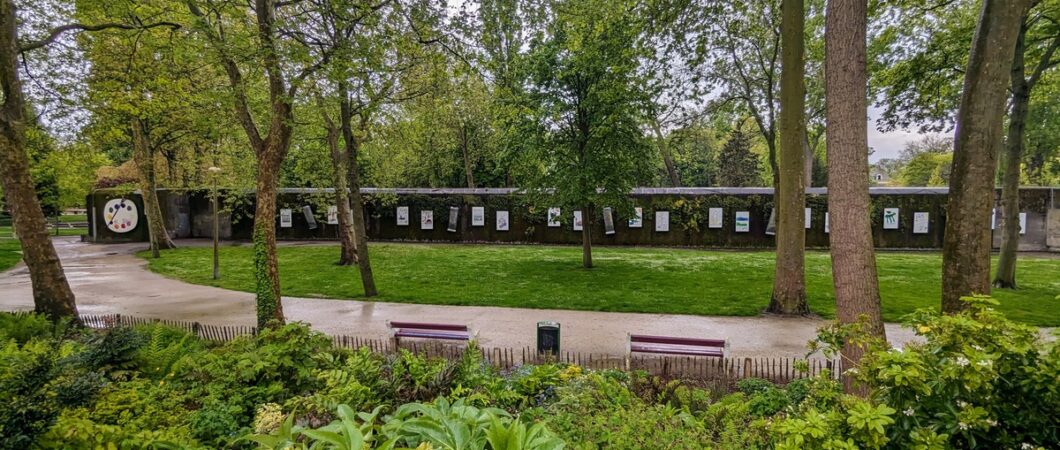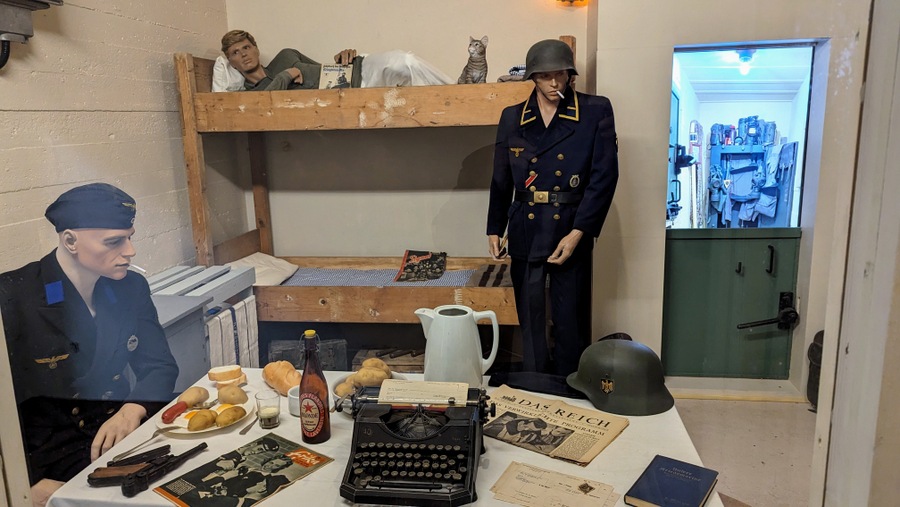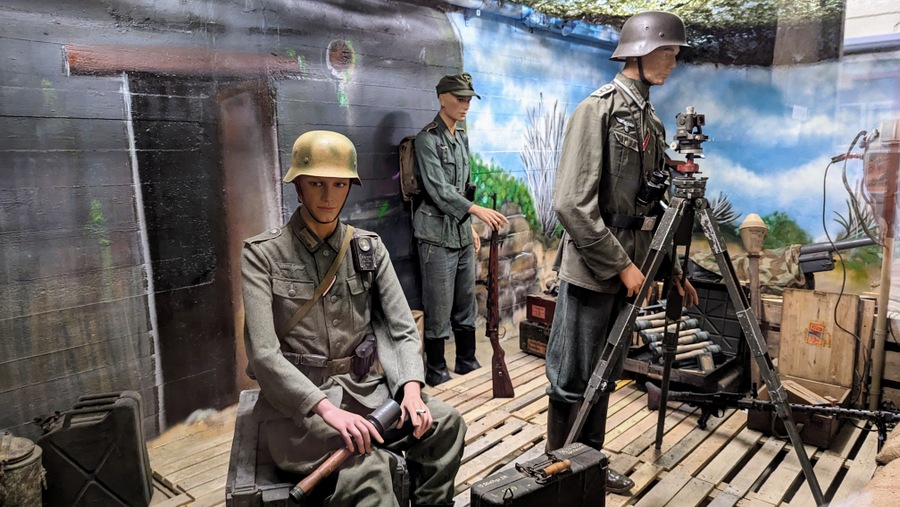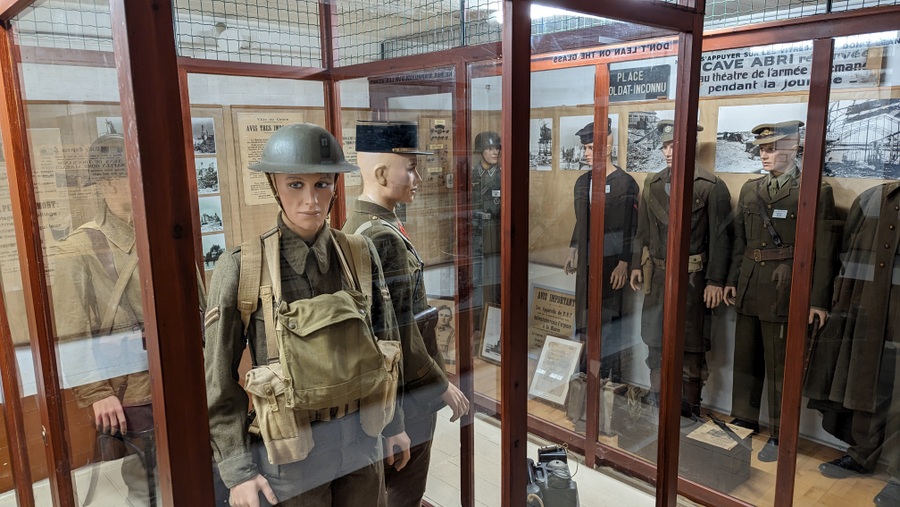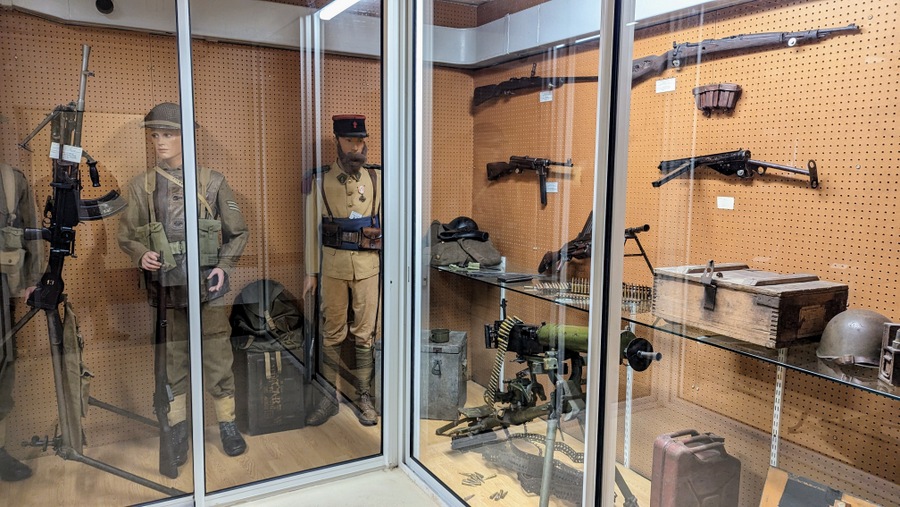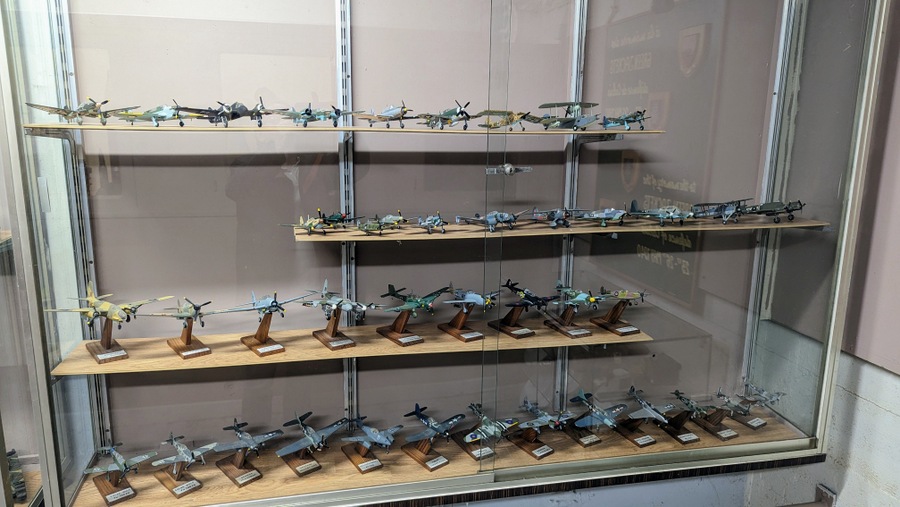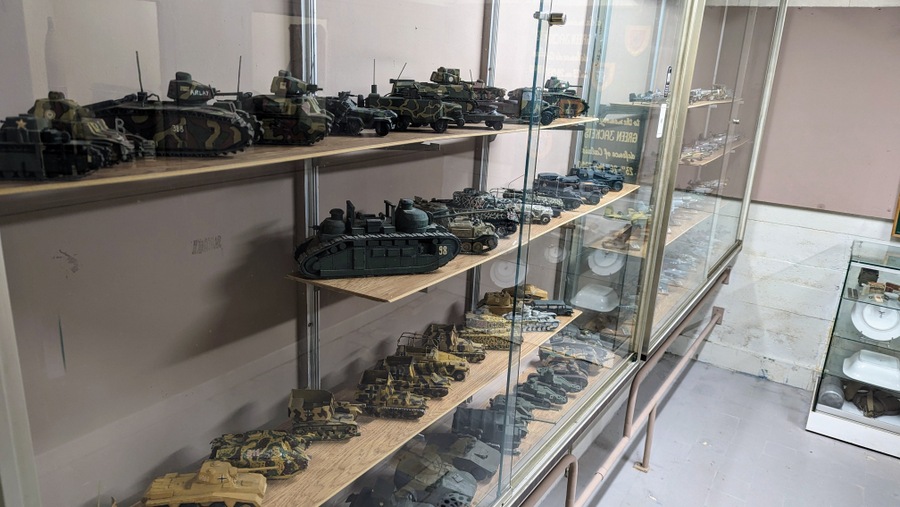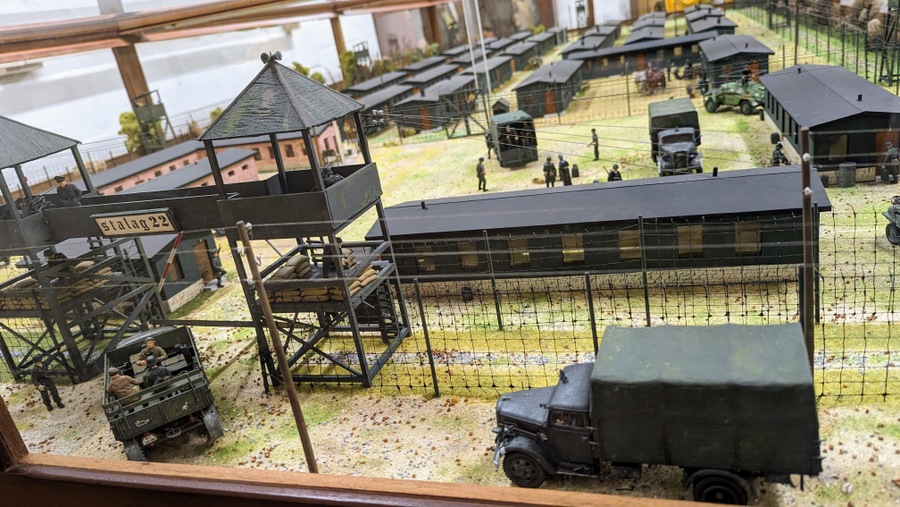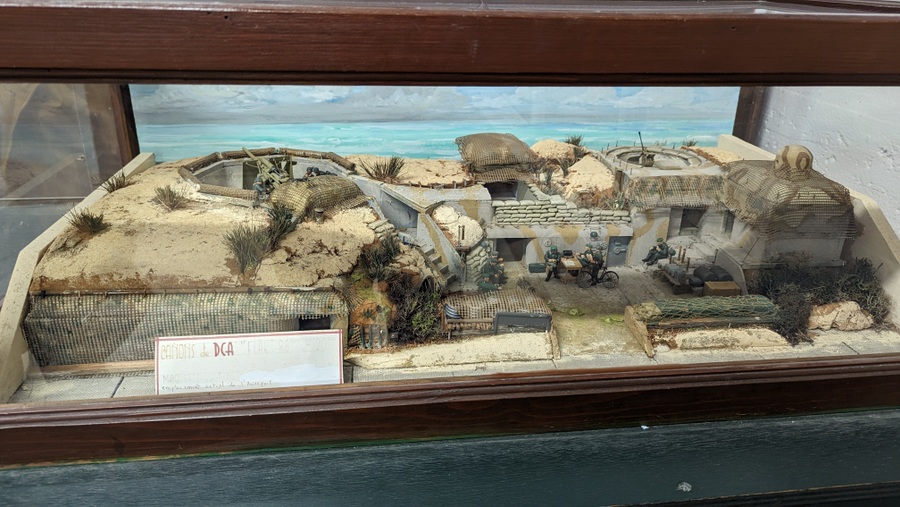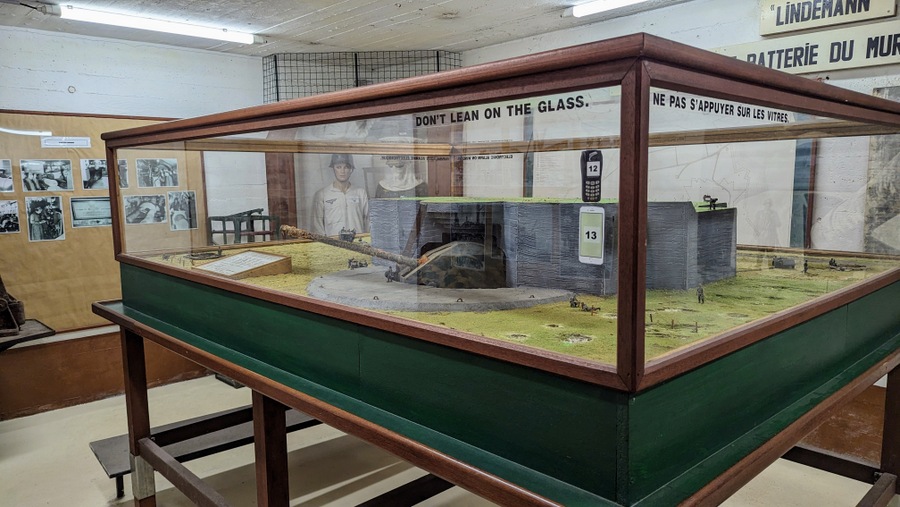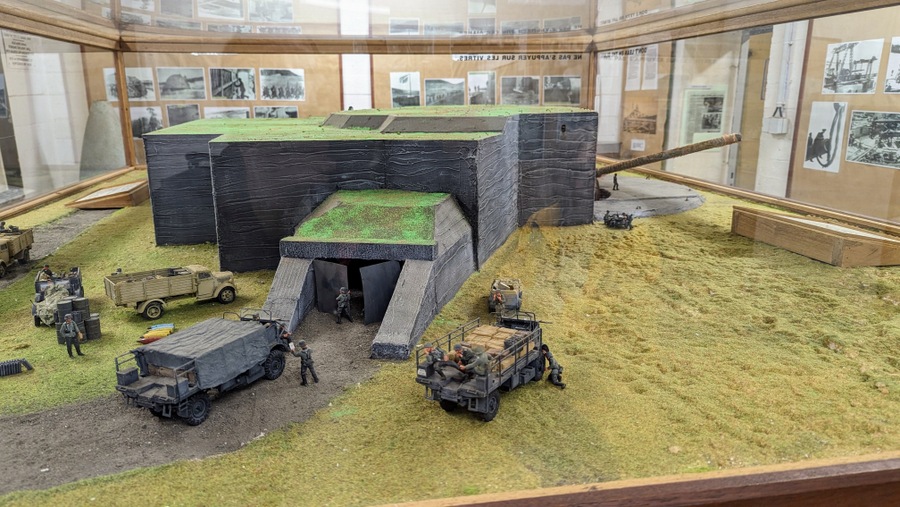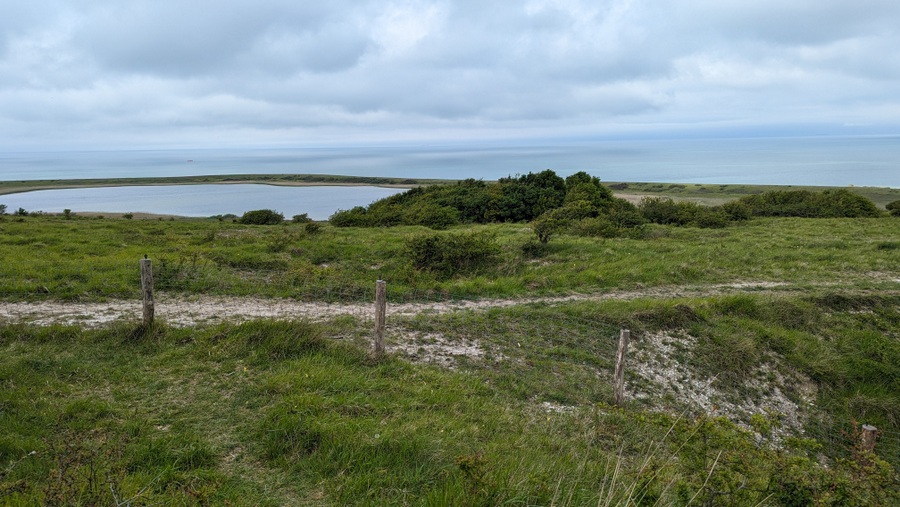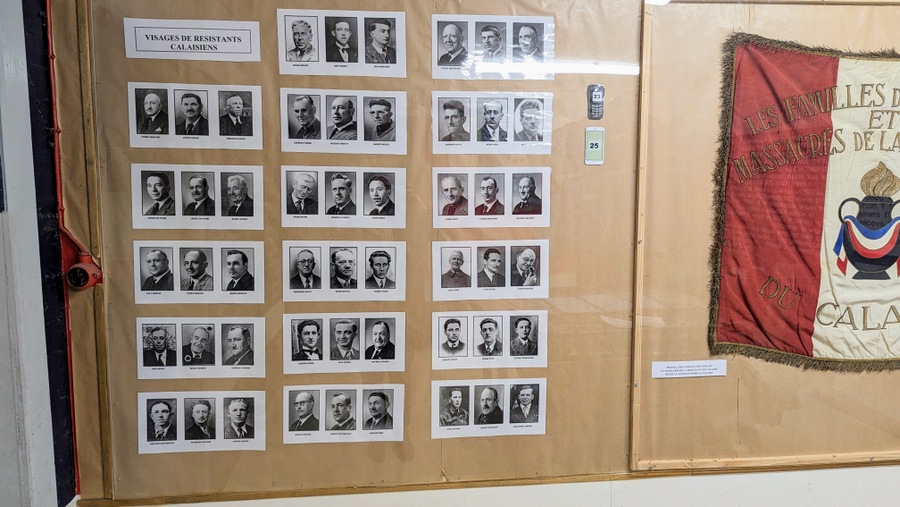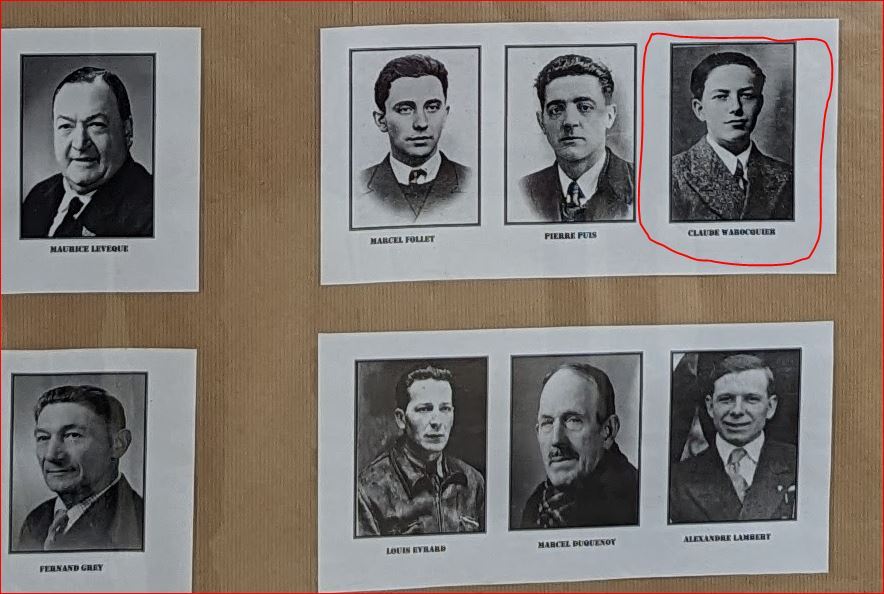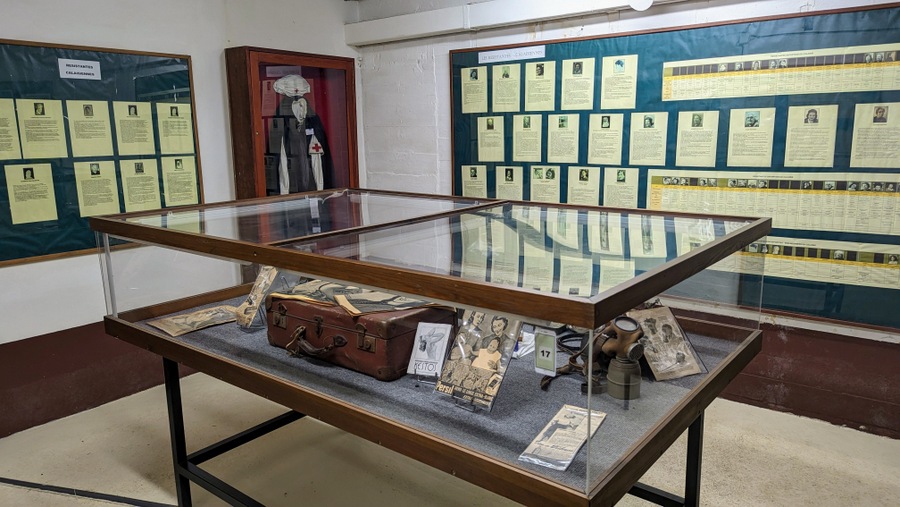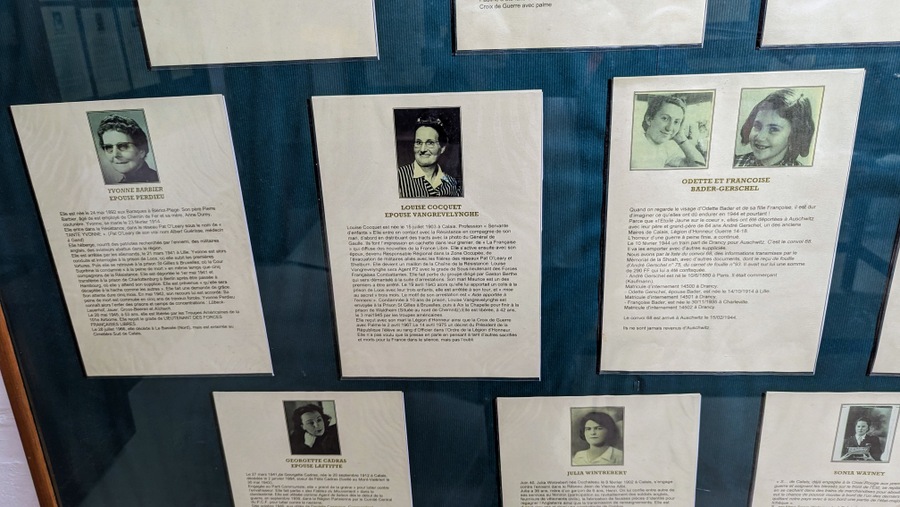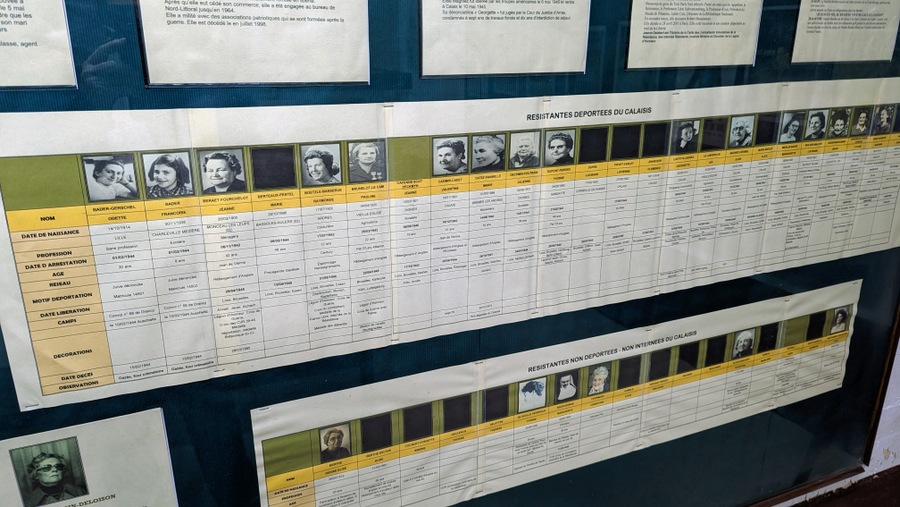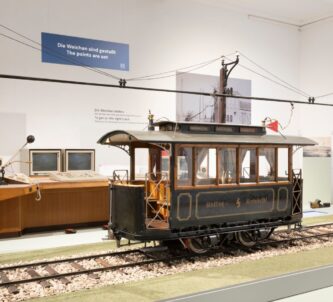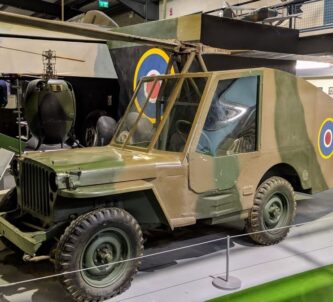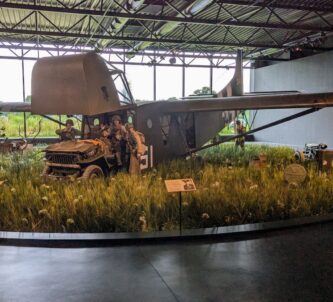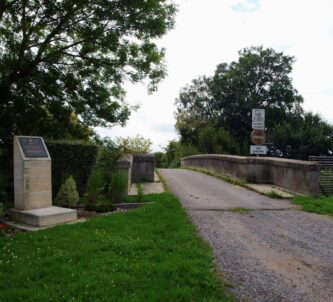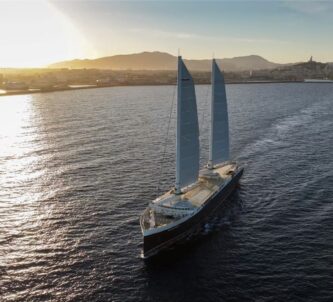The Calais Memorial Museum (Le Musée Mémoire 39-45 de Calais) is housed in a large (94m long) German WW2 concrete bunker in the middle of the Saint-Pierre park in downtown Calais.
The bunker was a command post, built in 1941 for the Kriegsmarine (German Navy). Hidden among the trees in the park and strictly off-limits to locals, the bunker managed to avoid being spotted and so remained untouched to the end of the war. Its 2m thick walls and 1.5m thick roof were un-challenged until soldiers from the Canadian 3rd Infantry Division stumbled across it on 30 September 1944.
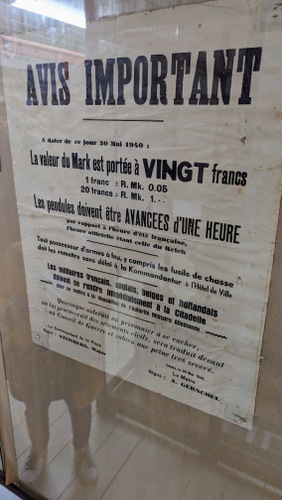
Now as a museum, it focuses on the impact of German occupation in and around Calais and on the local population, which begins pretty much with this ‘Important Notice’ in the name of the new German Kommandant, Major Steinberg, and the Mayor, Monsieur Gershel, on 30 May 1940, four days after the Germans seized the town.
It gets right down to business.
- The value of the deutschemark has been pegged to the Franc. From now on 1 Franc equals 0.05 Marks or, put another way 1 Mark = 20 Francs.
- Clocks are to be advanced by one hour, to synchronise with German time.
- Anyone who has a firearm, including a hunting rifle, must hand it in to the Kommandant’s office in the town hall.
- Any French, English, Dutch or Belgian soldiers must report immediately to the citadel.
- Whoever helps a prisoner to hide or provides them with civilian clothes will be brought before a military tribunal and punished very severely.
It sets the tone for the next few years, I think!
The museum layout is simple. There’s a single central corridor running the length of it, and eleven rooms/galleries on each side. Each room is themed, eg. Posters & Uniforms, Start of the War, Aviation, Charles de Gaulle, POWs, Women in War, The Resistance, etc.
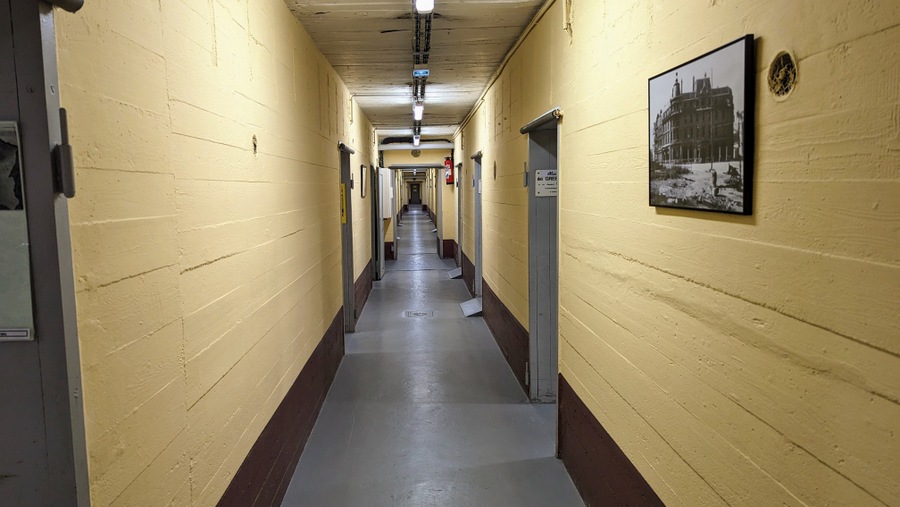
The rooms are not big and the artefacts are mostly small Eg. uniforms, small arms, models, photographs, newspapers and posters. The largest weapon on display is a 1939 Russian 76.2mm cannon in the entrance lobby that had been seized by the Germans in Czechoslovakia and added to the defences of Calais.
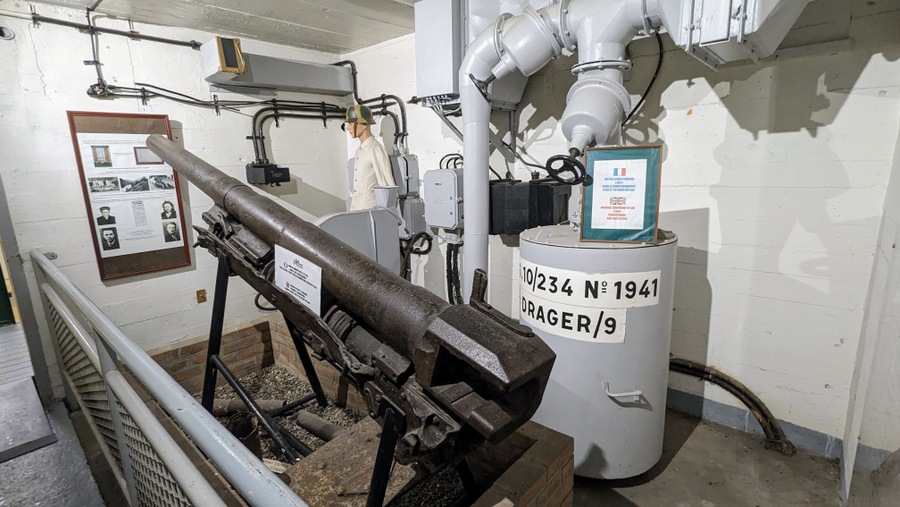
Uniforms and small arms
Several rooms display mannequins in uniforms (over 60 of them) from different armies, together with small arms and ammunition. In common with many museums there are also some simple dioramas showing Germans in their bunkers, including this one…
(I’m often struck by the use of modern shop mannequins in WW2 uniforms. I’ve seen some pretty effeminate soldiers in my time!)
Models
All museums have models, and TBH that’s fine by me. I love a good model! Calais Memorial Museum has the usual models of tanks and aircraft, but they also have some excellent large scale models.
In the POW room there’s a full size table model of a POW camp, Stalag 22. And in the Batterie Lindemann room, a detailed model of one of the three casemates of the huge German battery on the hill outside nearby Sangatte. The three 406mm naval guns could easily reach parts of Kent. It’s no longer there. The corner of one of the outlying bunkers on the site can be seen, but the three gun casemates were buried under a small lake, in the waste soil from Eurotunnel.
Wreckology (yes, it’s a word!)
In the Aviation room there are some bits from aircraft that fell to earth nearby, including two aero engines from downed aircraft at nearby Coquelles.
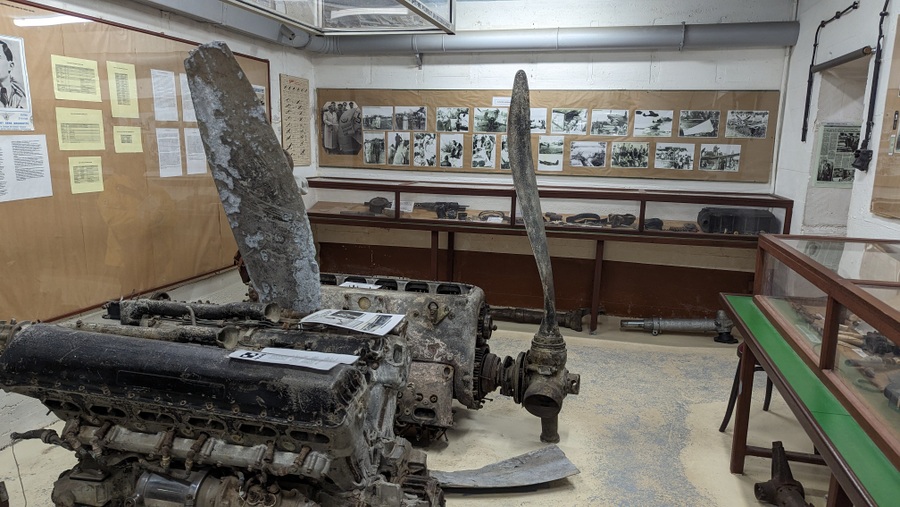
One is a mangled Daimler Benz 601 engine from a Messerschmitt 109, recovered in 1986. The other is a Rolls Royce Merlin engine from a Spitfire shot down by AA fire in June 1941. The pilot was an important Polish leader, Wing Commander Piotr Laguna who was leading the 1st Polish Fighter Wing on a raid. He died in the crash.
Résistance
“I have just been tried and sentenced to death by the occupation authorities.”There is a third wrecked engine in the Résistance room; another Merlin engine, this time belonging to a Hurricane Mk2 from 306 ‘City of Toruń’ Squadron, one of the three squadrons in Piotr Laguna’s Polish wing. The pilot was Joseph Zulikowski who came down at Nortkerque outside Calais the day after his wing commander was killed. The reason this engine is in the Résistance room is because Joseph was hidden and then smuggled back to England by the ‘Jean de Vienne’ Résistance network.
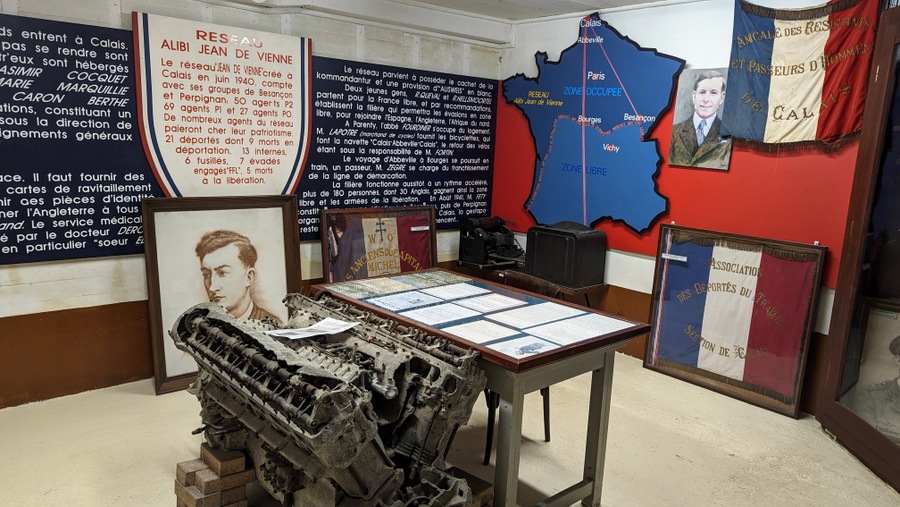
The Calais Résistance played a big role in the Liberation of France. In this room there are details of their actions and photos of many of them, plus a poignant reminder that this was not a cost free enterprise.
Among the photos is 20-yr-old Claude Waroquier. Nearby are recreations of two letters he wrote to his parents from prison in Paris in Oct 1943…
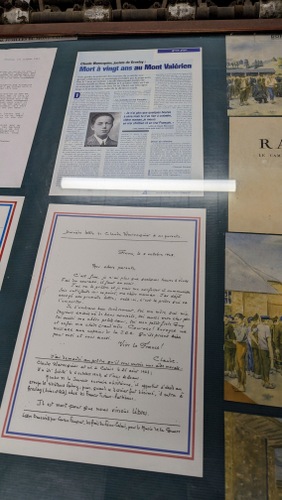
Fresne Prison, 1st Oct 1943
Dear Parents,
I have just been tried and sentenced to death by the occupation authorities. I hope that you will not worry too much when you hear the news. I do not regret anything. I have done my duty and I do not regret anything.
I would ask you to come and see me. You have the right to bring me some food because I am hungry, and some warm clothes because I have almost nothing left to wear and it is starting to get cold, and also if you could bring some tobacco, I have not smoked anything in almost a month. Try to come as soon as possible. For the visiting hours, it is in the morning from 0900 to 1200,and in the afternoon from 1400 to 1600.
That is all I have to tell you for the moment, except that I am bored alone in my cell, and that morale is very low. Once again I say do not worry too much. I still hope for my return to grace and to see this death sentence reduced to a less heavy sentence.
You will kiss Madeleine and Guy for me, I hope to see you too. And dear mother, pray well to God for me, because I really need it. As for you dear father, I can’t think of anything to say to you except don’t be too cross with me. It is not a dishonour, I fought like a true Frenchman. I kiss you all and see you soon.
Vivre la France!
Claude
—–
Fresne Prison, 1st Oct 1944
My very dear Parents,
It’s over. As I write you I have only a few hours left to live. But you have nothing to fear dear mother, I die as a true Christian and a true Frenchman. I saw the Chaplain and above all, what I ask of you is not to worry too much. You have to have courage. I for my part have some because I have seen you for that last time. It’s true, I have many comrades who have not been able to see those people most dear to them.
My dear father, take courage and console Mamman. My dear sister, I kiss you from afar as I do my dear little brother Guy and my grandmother. And finally, when you return to Calais, kiss the whole family. I was just thinking of all the friends of the J. O. C. and hope they will pray for me and you too.
I kiss you all from afar, one last kiss
Claude
There’s at least one other similar letter from a condemned Résistance prisoner displayed in this room. Notice, these are all men, but there were women Résistance too.
In the Women at War Room, there, covering the walls are details of courageous women in the Résistance in the Calais area. One interesting table records women who were deported. It shows why they were sent to the camps – Eg. for hiding escaped prisoners, distributing anti-German propaganda, or being denounced as a Jew – and if they survived the war, what happened to them.
Newspapers and posters
Some of the museum’s best assets are the newspapers and official notices that set the context for the experiences of those living and working in Calais.
For example, with headlines like “Czechoslovakia is no more” and “A decisive week for the country” Frenchmen in March 1939 could feel the war clouds gathering.
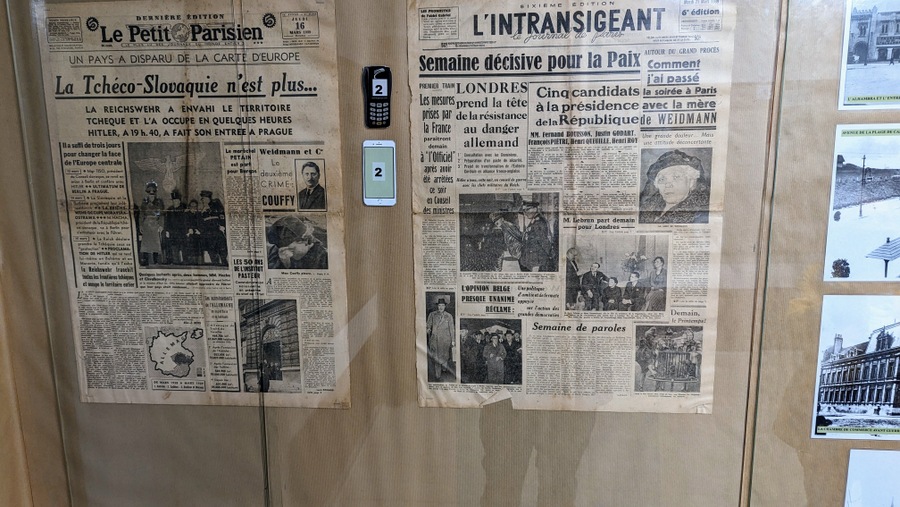
One of my favourite notices appeared almost a year after that first AVIS (notice) was posted at the start of the occupation (above). It seems the natives were already beginning to get restless! And the new Kommandant, Major Baacke, had to issue a stern notice on the 30th March 1941…
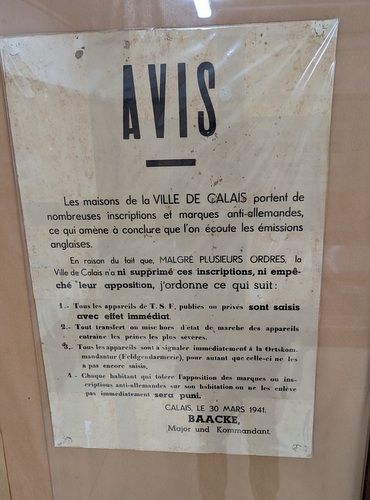
Some houses in Calais are bearing anti-German writing or signs which can only lead us to conclude that inhabitants are listening to English transmissions.
Due to the fact that, despite several orders, the city has not removed these inscriptions nor prevented their creation, I am ordering that:
- All public or private radio devices are to be seized with immediate effect
- Any attempt to move such devices or disable them will result in the most severe penalties
- All devices must be reported to the Ortskomandantur (local government office) unless they have already been seized by them.
- Each inhabitant who tolerates the affixing of anti-German signs or inscriptions on his home or fails to remove them immediately, will be punished
You can tell these signs had really got under Major Baacke’s skin!
As the occupation wore on, notices were issued on all matters that affected civilian live, from the introduction of rationing, to the reorganisation of education.
There was also the matter of the war itself. In Aug 1943, civilians are reminded that in the event of military action:
- All civilians including women and children are to go straight to their homes and stay in the cellar.
- Any civilian found in the street or outside their home, whether a man, woman or child, will be considered to be a partisan, and the army have orders to shoot without warning.
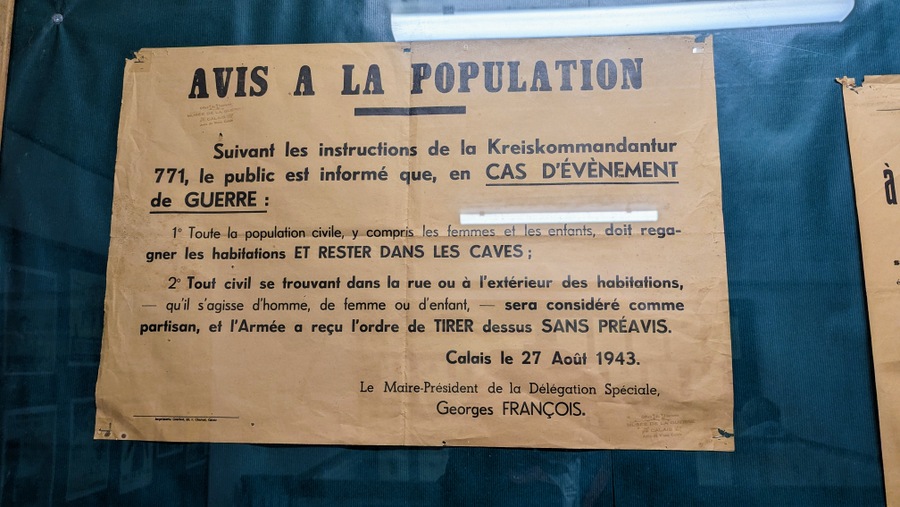
With Allied forces gathering in early 1944 for what everyone knew would be an invasion (almost certainly, as that military genius Hitler thought, right here in Pas-de-Calais) posters started appearing with details of trains and departures for civilian evacuations.
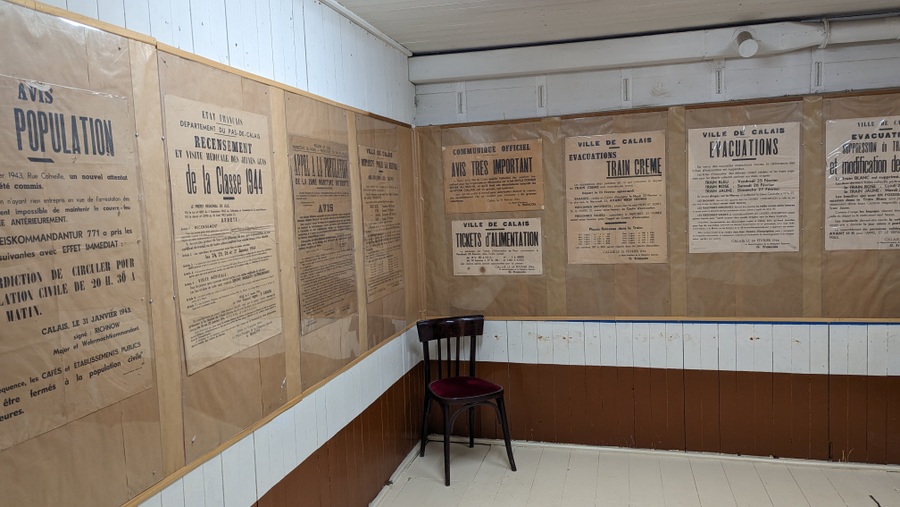
“No, not you!” The notice in the corner (‘AVIS tres important’) warns those workers working for German organisations that they must stay at their posts. They are absolutely forbidden to leave Calais. If they do, they must return immediately or there will be severe sanc… blah, blah, blah. We know the rest.
On the 14th June 1944, a week after D-Day, the Mayor is so worried about bombing, he issues a notice saying the cellars under the town hall should not be used by those seeking shelter as a bomb could easily pass through the building and into the basement. Civilians should find other, better, shelters.
The museum’s other assets
One of the rooms in the museum is dedicated, at a tangent, to the First World War, with uniformed mannequins and period notices from the era. And another has been set aside as a small cinema showing archive footage from 1943. There is also an audio guide app (in English) available for your phone.
The Musée Mémoire 39-45 is a really interesting and moving museum. What’s special about it is not its collections of weapons, uniforms, aircraft engines or models – almost every military museum has those. It’s the paperwork. It’s the notices (posters), the newspapers, the printed records, the stories and the photographs that bring to life (and death) the experiences of those who lived here during the war.
Declaration: I was on a self-driving research trip supported by Pas-de-Calais Tourisme. Museum entry was complementary.
Factbox
Website:
Musée Mémoire 39-45
Getting there: Parc Saint-Pierre,
62100 CALAIS
France
There’s no dedicated parking for the museum but it’s not too hard to find spaces on the streets around the park.
Entry Price (2024):
| Individual | Groups/schools (15 per) | |
|---|---|---|
| Adult (12+yrs) | € 8.00 | € 6.00 |
| Child (4 – 11yrs) | € 6.00 | € 4.50 |
| Children under 4 FREE | ||
Opening Hours (2024):
| 01 Feb – 30 Apr | 1100 – 1700, Except Tuesdays & Sundays |
| 01 May – 30 Sep | 1000 – 1800, 7 days a week |
| 01 Oct – 11 Nov | 1100 – 1700, Except Tuesdays & Sundays |
| 12 Nov – 31 Jan | Closed |

